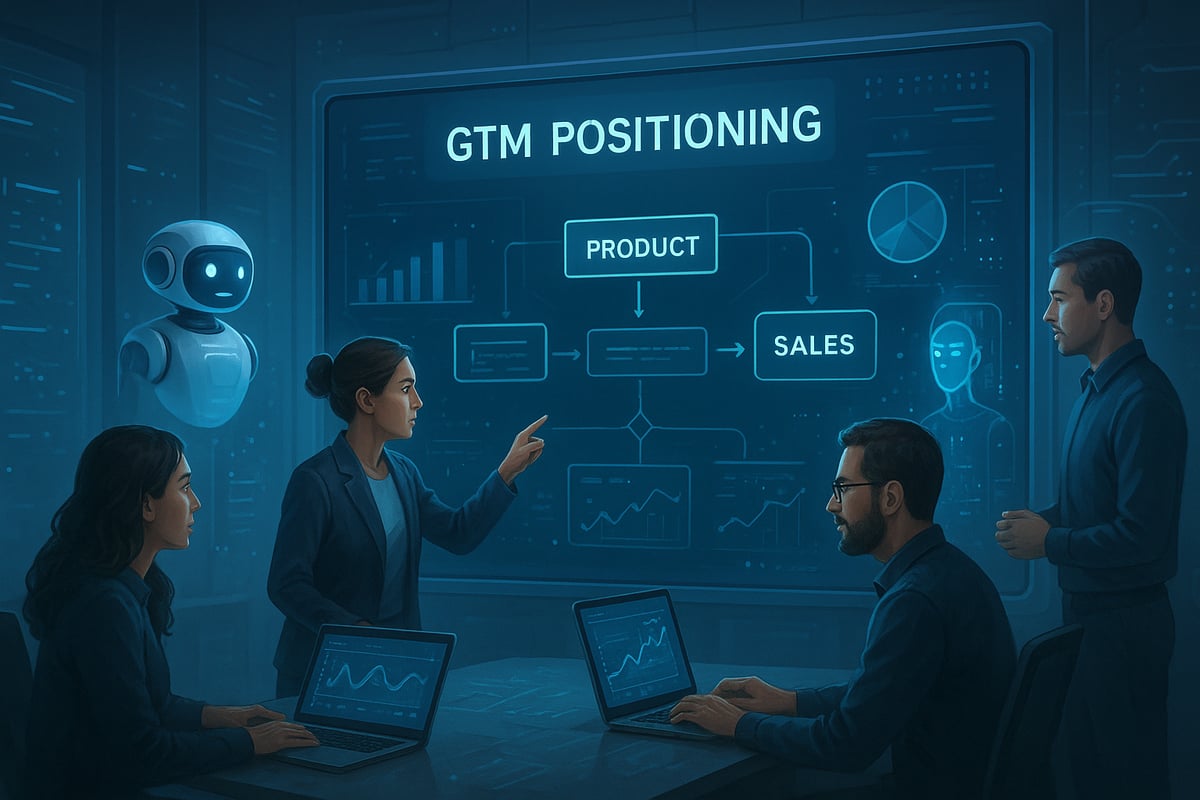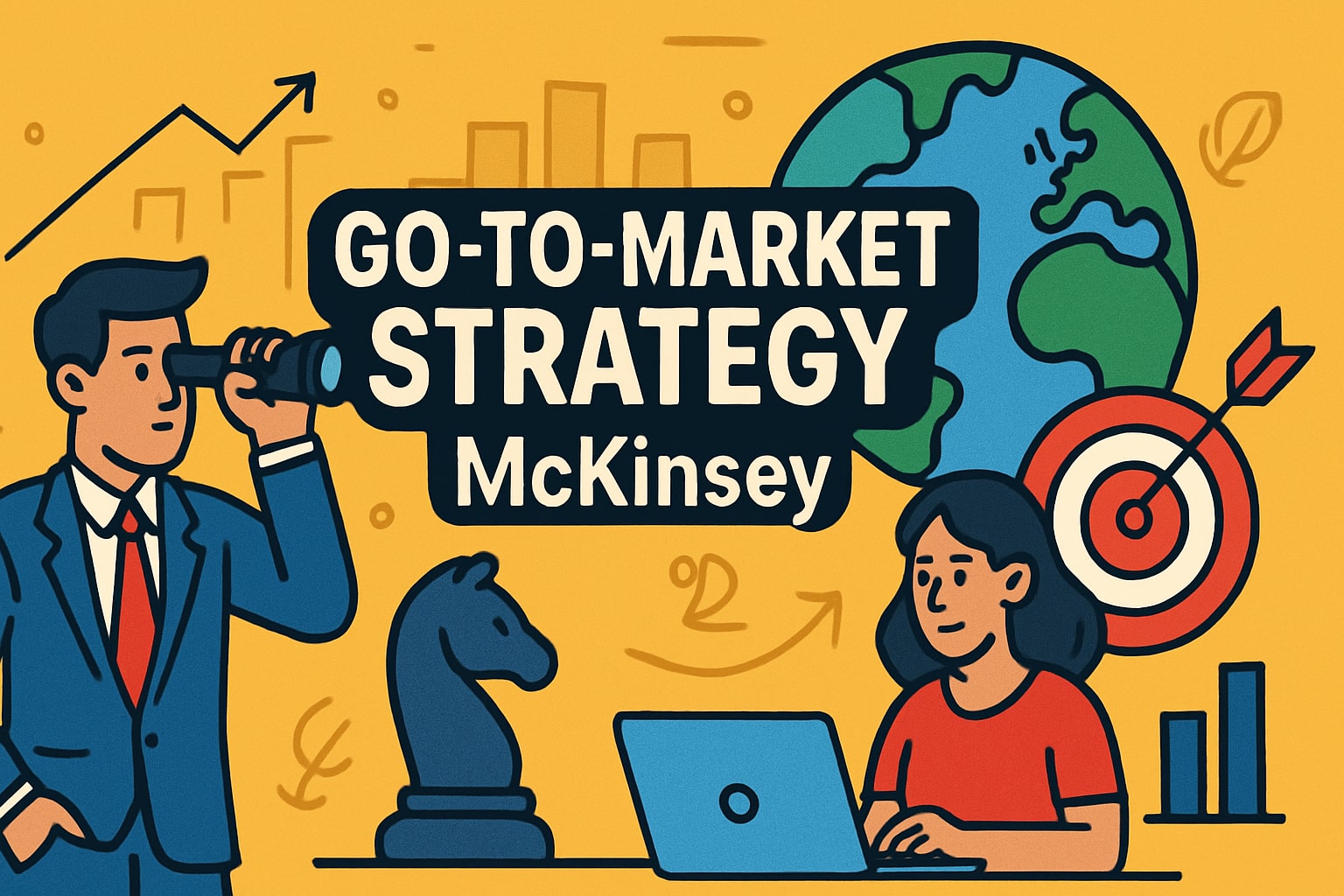GTM Positioning Guide: Strategies for Success in 2025


In 2025, the world of gtm positioning is rapidly changing. AI-driven innovation and evolving buyer expectations are reshaping how B2B SaaS companies go to market. The rules are new, and leaders must adapt to stay ahead.
This guide is your roadmap to mastering gtm positioning. Discover strategies that drive scalable revenue and unlock enterprise growth. We’ll explore the latest market trends, proven frameworks for alignment, data-driven execution, and the transformative role of Agentic AI.
Are you ready to refine your approach? Let’s dive in and transform your GTM strategy for lasting success.
Understanding GTM Positioning in 2025
The rules of gtm positioning are being rewritten as we enter 2025. In the crowded enterprise SaaS space, how a company defines and communicates its unique value is the difference between standing out and blending in. But what does gtm positioning mean in today’s AI-fueled, fast-moving market?

Buyer journeys are evolving at record speed. AI-enabled competitors are constantly raising the bar, forcing SaaS leaders to rethink how they approach the market. Today, success hinges on more than clever messaging; it’s about unifying product, marketing, and sales under a single growth vision.
Key trends shaping gtm positioning include:
- Data-driven decision-making at every stage
- Cross-functional alignment to break down silos
- Personalized, insight-driven engagement, with 74% of B2B buyers now expecting this level of relevance (Gartner, 2024)
Consider how Salesforce pivoted by offering industry-specific solutions, carving out a distinct edge in enterprise SaaS. This approach, and others like it, can be explored through real-world go-to-market strategy examples that highlight what works in practice.
However, challenges remain. Many organizations struggle with outdated messaging or siloed teams, which erode the impact of their gtm positioning. Remember, positioning isn’t just a tagline—it’s the backbone for integrating product, marketing, and sales efforts.
Static positioning simply can’t keep pace with today’s cycle of innovation. To win in 2025, companies must treat gtm positioning as a living, data-driven process, continually refined to reflect buyer needs and market shifts.
Aligning Product, Marketing, and Sales for Unified Growth
Achieving unified growth in B2B SaaS hinges on seamless alignment between product, marketing, and sales. When these teams operate as one, companies see faster pipeline growth and more predictable ARR impact. Yet, misalignment remains a top pain point, leading to wasted resources and lost deals.
Let’s compare the difference alignment makes:
| Factor | Aligned Teams | Siloed Teams |
|---|---|---|
| Win Rate | 38% higher (Forrester, 2023) | Lower, inconsistent |
| Pipeline Velocity | Rapid, measurable | Slow, bottlenecked |
| Messaging Consistency | Unified across touchpoints | Fragmented, confusing |
| AI/Agentic Automation Use | Integrated, data-driven | Disconnected, under-leveraged |
HubSpot’s “smarketing” approach offers a real-world example. By integrating sales and marketing, they created shared dashboards and OKRs tied directly to pipeline and ARR. This strategy transformed gtm positioning from a static message to a dynamic, operational framework.
Disconnected teams often fall into the trap of measuring vanity metrics instead of outcomes. The best teams use operational dashboards and real-time data to foster accountability and drive growth. Agentic AI now further enables this by automating handoffs, personalizing engagement, and surfacing insights that help teams collaborate smarter.
For SaaS leaders ready to move beyond siloed departments, GTM strategy templates provide actionable frameworks to align KPIs, automate workflows, and make gtm positioning a living, revenue-driving function. The future belongs to organizations that operationalize alignment—not just strategize it.

The Role of Agentic AI and Automation in GTM Strategy
Imagine stepping into a sales meeting where your team already knows which accounts are ready to buy and what messages will resonate. That’s the promise of Agentic AI in gtm positioning for B2B SaaS. Agentic AI refers to autonomous digital agents that optimize the entire go-to-market workflow, from lead scoring to personalized engagement.
These AI-driven systems can handle repetitive tasks like outreach, follow-up, and qualification at a scale that humans simply can’t match. For example, Drift’s AI chatbots have helped enterprise teams boost their pipeline by 30 percent, instantly qualifying leads and routing them to the right reps. This level of automation means your gtm positioning can adapt in real time as buyer signals shift.
According to recent research, 61 percent of B2B SaaS firms plan to increase their AI investment in GTM by 2025. However, there’s a risk: over-automation can erode trust if human expertise doesn’t guide the process. The most effective GTM teams use agentic AI to rapidly experiment, test positioning messages, and refine strategies, but they never remove the human touch. As explored in Agentic AI in SaaS GTM, the future of gtm positioning is hybrid—AI powers speed and scale while people provide strategy and relationship-building.
In this evolving landscape, combining agentic automation with expert oversight ensures your GTM approach remains agile, data-driven, and deeply aligned with enterprise buyer expectations.

Data-Driven Positioning: Metrics That Matter for 2025
In 2025, data-driven gtm positioning is the linchpin for B2B SaaS growth. Leaders know that what gets measured shapes both strategy and execution. The right metrics not only illuminate what’s working but also reveal the hidden gaps that stall revenue and market share.

Metrics That Define GTM Positioning in 2025
To compete and win, companies must track metrics that tie directly to revenue and market impact. Here are the core numbers driving modern gtm positioning:
| Metric | What It Measures | Why It Matters |
|---|---|---|
| Pipeline Velocity | Speed and value of deals moving through pipeline | Reveals sales efficiency and market fit |
| ARR Impact | Annual recurring revenue generated | Core indicator of sustainable growth |
| Win/Loss Analysis | Reasons behind deal success or failure | Guides positioning refinement and enablement |
| Customer Lifetime Value | Total revenue expected from each customer | Informs retention and upsell strategies |
Companies leveraging advanced analytics, like Snowflake, use cohort analysis to uncover which segments respond best to new positioning. This allows pinpoint adjustments in messaging and targeting.
Real-World Examples and Insights
Snowflake’s granular approach with cohort analysis led to sharper segment targeting and improved pipeline velocity. According to McKinsey, organizations using analytics for gtm positioning enjoy 23 percent faster GTM cycles, translating into quicker wins and more predictable growth.
However, many SaaS firms still fall into the trap of chasing vanity metrics like impressions or clicks. These numbers look impressive but rarely correlate with enterprise outcomes. For a deeper dive into how to avoid these pitfalls, see Why most go-to-market strategies fail.
Best Practices for Data-Driven GTM Positioning
- Build unified dashboards for real-time, cross-team visibility.
- Regularly audit and update metrics to reflect evolving buyer journeys.
- Prioritize metrics that connect directly to revenue, such as ARR and pipeline velocity.
- Use win/loss interviews to validate and refine positioning.
Data-driven gtm positioning is not a one-time project, but an ongoing discipline. The most successful SaaS companies treat every metric as a feedback loop, enabling continuous optimization and faster adaptation to market shifts.
Best Practices and Pitfalls in GTM Positioning for Enterprise SaaS
Getting gtm positioning right is the difference between dominating your market and fading into the background. In enterprise SaaS, the rules are constantly shifting, and so must your approach.
Best Practices for GTM Positioning
- Regularly refresh your gtm positioning by gathering buyer feedback and tracking market signals.
- Foster cross-functional enablement so product, marketing, and sales speak the same language.
- Conduct win/loss interviews to understand real decision drivers and refine your strategy.
- Leverage AI and Agentic Automation to analyze trends, personalize engagement, and quickly test new positioning angles.
- Use frameworks like those in Crossing the enterprise chasm to align sales-led growth with market needs.
Pitfalls to Avoid
- Focusing on product features instead of the customer outcomes that matter to enterprise buyers.
- Sticking with outdated messaging while competitors adapt and outpace you.
- Operating in silos and failing to align teams around a unified market story.
- Ignoring competitor moves and disruptive market shifts.
Real-World Lessons
Slack’s famous pivot from team chat app to enterprise collaboration platform is a textbook example of adaptive gtm positioning. They listened, iterated, and captured new segments. Yet, 57% of failed launches cite unclear positioning as the root cause (CB Insights, 2023).
Success demands a gtm positioning mindset that is adaptive, data-driven, and relentlessly customer-centric. Embrace continuous learning, harness technology, and always keep your finger on the pulse of your buyers.
After reading through these strategies, you might be picturing how they could apply to your own journey—maybe remembering a time your team struggled to align on messaging, or when a data-driven change finally moved the revenue needle. I’ve seen founders and growth leaders transform scattered efforts into unified, pipeline-driven success once they found the right positioning and frameworks. If you’re ready to take the next step and want a sounding board for your own GTM story, let’s talk. You can Book Your Personal Intro Call and start building your own path to scalable growth.

Latest From
The Blog
Go To Market Strategy Consulting Guide For 2025 Success

Go To Market Strategy McKinsey Guide For Success 2025

Crossing the Enterprise Chasm: A Practical Guide to Sales-Led Growth (SLG)


Let's Build The Future Together







.jpg)